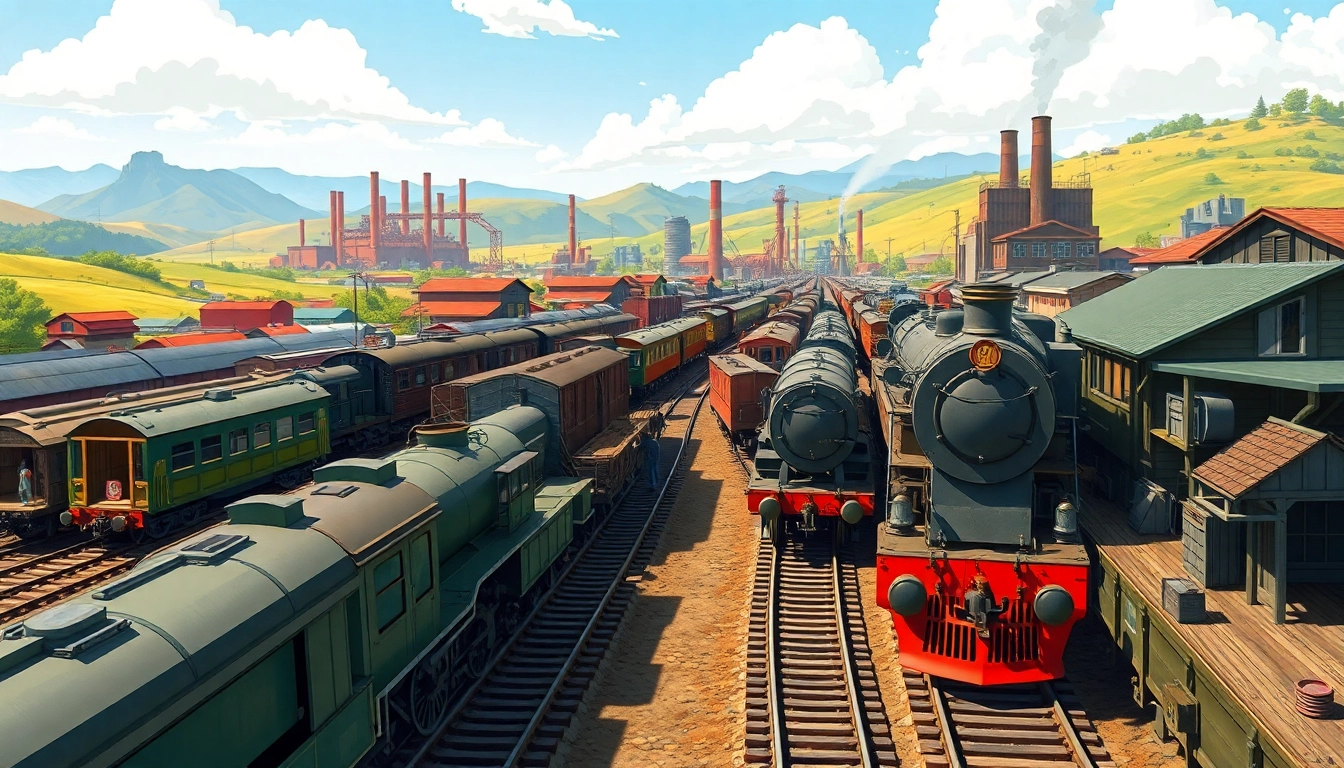Overview of the Dune 2 Game
Introduction to Dune 2 Game
Released in 1992, dune 2 game marked a significant evolution in the landscape of real-time strategy (RTS) gaming. Developed by Westwood Studios and published by Virgin Games, it is often cited as one of the pioneering games that laid the groundwork for future strategy titles. Players are immersed in a richly built universe inspired by Frank Herbert’s iconic science fiction series, where control of the vital resource known as spice fuels not just warfare but the very fate of entire factions. With its innovative mechanics and engaging narrative, Dune II set a precedent that many games would follow in the ensuing decades.
Historical Context and Development
The development of Dune II was a significant feat during a period characterized by the nascent evolution of computer gaming. The original Dune game, released earlier that same year, was a blend of adventure and strategy but lacked the depth and real-time mechanics that would define its successor. Westwood Studios recognized the potential for a more interactive experience and began crafting Dune II as a comprehensive strategy game.
Drawing from the lore of Herbert’s novels, the designers wanted to create a dynamic environment where players could engage in combat while managing resource production and base building. The game introduced many concepts that would become staples in RTS games, including unit selection, resource management, and tech tree upgrades, thereby cultivating a genre that continues to thrive today.
Gameplay Mechanics of Dune 2 Game
The gameplay of the Dune 2 game is centered around three distinct factions: the House Atreides, House Harkonnen, and the Ordos. Each faction offers unique units, buildings, and strategies, encouraging players to adopt varying approaches based on their chosen alignment. Players must manage their resources efficiently—particularly spice, which is crucial for almost every action in the game, from constructing buildings to creating military units.
Players begin with a base of operations where they can expand their territory, construct structures necessary for resource collection and military production, and fortify defenses against rivals. The real-time nature of the game means that strategic decisions must be made rapidly as enemies seek to undermine your efforts. Scouting enemy positions and defensive planning are crucial to establishing dominance before launching offensives.
Strategic Gameplay Techniques
Resource Management in Dune 2 Game
Resource management is at the heart of effective gameplay in Dune II. Spice harvesting is the primary economic driving force, and players must prioritize collecting it while defending their harvesting units from enemy attacks. Balancing between offensive maneuvers and economic stability is crucial; focusing too heavily on military development at the expense of spice collection can lead to a swift downfall.
To optimize spice harvesting, players should position harvester units near spice fields and have adequate protection in place. Utilizing multiple harvesters to maximize collection speed, while employing combat units to fend off sandworms and enemy attacks, can significantly increase efficiency.
Building Effective Units and Structures
As players progress through the Dune 2 game, constructing a diverse range of units and structures becomes vital. Different units serve various roles in combat, from infantry to heavy machinery. Within each faction, players will find strengths and weaknesses among units that require thoughtful strategic planning. For example, heavy tanks are powerful but slow and vulnerable without infantry support. Incorporating a balance of unit types can lead to greater battlefield effectiveness.
A tactical consideration is the deployment of structures to enhance production capabilities. Players should prioritize the construction of barracks, factories, and defenses that align with their chosen strategy, whether it be aggressive expansion or calculated defense. Rapid expansion is often key; however, players also need to ensure that their base is secure enough to withstand enemy assaults.
Adapting Strategies for Different Factions
The Dune 2 game not only challenges players through resource management and combat, but also requires them to adapt their strategies based on the faction they choose. House Atreides, Harkonnen, and Ordos each have specific advantages. For instance, players opting for the Atreides benefit from superior technology and units, while Harkonnen forces pack a heavy punch with their powerful artillery units.
Understanding each faction’s strengths allows players to tailor their strategies accordingly. For House Ordos, leveraging speed and subtlety through subterfuge can lead to victories that would not be possible in direct confrontations. Analyzing the weaknesses of an opponent’s faction can lead to tactical advantages in battles, reinforcing the dynamic nature of Dune II gameplay.
The Importance of Spice Control
Strategies for Effective Spice Harvesting
In Dune II, controlling spice is not merely an objective; it is a means to ensure victory. Players can implement several strategies for effective spice harvesting. First, positioning harvesters strategically to ensure safety from enemy attacks is vital. Deploying units to provide cover while gatherers work is a sound tactic, as enemy factions will often seek to sabotage harvesting operations.
Moreover, the use of sandworms poses an additional layer of challenge in spice harvesting. Upon detecting harvesting activity, these creatures can devour units, effectively incapacitating the wealthy spice resource. Players should be aware of the spawning patterns of sandworms and plan their harvesting routes to mitigate risk, utilizing temporary fortifications to shield units when necessary.
Defending Spice Mines
Once spice mines are established, protecting them becomes a priority for players looking to maintain their resource advantage. Defensive structures, such as turrets and walls, can be placed strategically around harvesting sites. Moreover, maintaining a rotation of combat units to patrol mines ensures that any incoming threats are dealt with promptly, turning the tide in favor of whoever can secure spice production.
Developing an effective defense requires players to analyze enemy behavior. If an opponent frequently targets a specific mine, it may be advantageous to increase defenses there or even relocate harvesting operations to less-obvious areas to maintain a competitive edge.
Utilizing Spice for Strategic Advantage
Beyond simple resource management, spice holds immense power in the Dune 2 game, providing not just economic benefits but also strategic options within gameplay. Accumulating a surplus of spice can enable players to invest in advanced units, research upgrades, and create a robust army capable of overpowering opponents. Players should constantly evaluate when to push for resources, when to hold back, and how best to utilize their spice reserves.
Strategically timed pressure—whether financially or militarily—can dismantle opponent defenses if coordinated with a spice-driven economy. Players must remain vigilant, exploiting windows of opportunity as they arise to maximize their resourcefulness aligned with the ebb and flow of the game.
Community Insights and Resources
Online Forums for Dune 2 Game Enthusiasts
The Dune 2 game has cultivated a dedicated community, eager to share insights, strategies, and experiences. Online forums provide a haven for fans to exchange ideas about tactics, analyze gameplay, and discuss the lore that surrounds the Dune universe. Engaging in such communities can offer valuable insights—beyond what any single player may discover on their own.
With seasoned players often willing to share their knowledge, these forums can serve as educational resources, where amateurs can learn from experts, facilitating a faster learning curve and greater enjoyment of the game.
Reviews and Critiques of the Dune 2 Game
Critiques of the Dune 2 game have often emphasized its groundbreaking approach to real-time strategy mechanics. Reviews note how its balance of resource management, unit control, and engagement with the game world established norms that many contemporary RTS games follow. While some critiques point to aspects that may feel dated today, the overarching sentiment remains that Dune II is a pivotal title in the history of gaming.
The prestige of Dune II invites critical reviews, which occasionally dive into its artistic elements, such as narrative execution and visual design. Examining various reviews can offer new players perspectives on what to expect and what strategies might work best, while for veterans, it can rekindle nostalgia for their early gaming experiences.
Guides and Walkthroughs
For players seeking to master the Dune 2 game, numerous guides and walkthroughs exist to aid in navigating its complexities. From beginner tips to advanced strategies, these resources cover a range of topics, providing in-depth analyses of the game mechanics, faction strengths, and optimal unit compositions.
Video tutorials on platforms like streaming services also offer a visual aid for those who learn by watching. These mediums collectively enhance understanding of gameplay tactics, ensuring that every player can find a path to success, regardless of their skill level.
Future of the Dune 2 Game Franchise
Retrospective: Dune 2’s Impact on Strategy Games
The legacy of the Dune 2 game extends far beyond its original release. It opened the floodgates for a myriad of RTS titles that would dominate the gaming scene in subsequent years. The innovations established in Dune II—real-time strategy, complex unit management, and resource control—have become fundamental components in modern gaming.
Many titles currently popular in the gaming community can trace their design philosophies back to the foundational elements introduced in Dune II. It has inspired generations of developers to push the boundaries of what strategy games can embody and accomplish.
Potential Remakes and Innovations
With its continued relevance, discussions surrounding remakes and more innovative adaptations of Dune II abound. Remakes could provide nostalgia for longtime fans while updating gameplay mechanics to align with contemporary expectations. Such projects often retain the core gameplay elements that made the original a success while infusing them with enhanced visual design and improved AI algorithms.
This revival can also highlight the game’s legacy, reaching new audiences and providing a fresh context for the challenges faced in spice harvesting and faction warfare.
Fan Contributions and Modding Community
The vibrant modding community surrounding Dune II has allowed fans to build upon the original design. Modifications often introduce new units, campaigns, and gameplay elements, maintaining the longevity of the game and allowing it to evolve organically. These contributions are a testament to the incredible dedication of the fanbase, proving that the Dune II universe continues to inspire creativity and engagement.
Moreover, fan-led initiatives often serve as a springboard for discussions about future developments in gameplay mechanics, new titles within the franchise, and collaborative writing that expands on the Dune lore, creating an active community found in many aspects of gaming culture.



